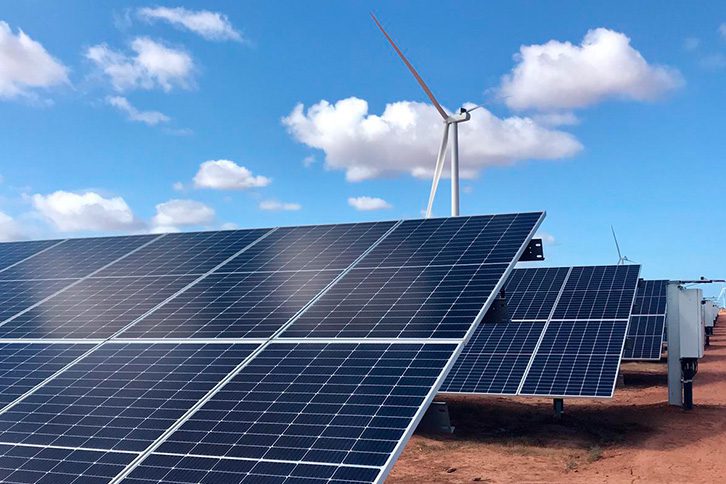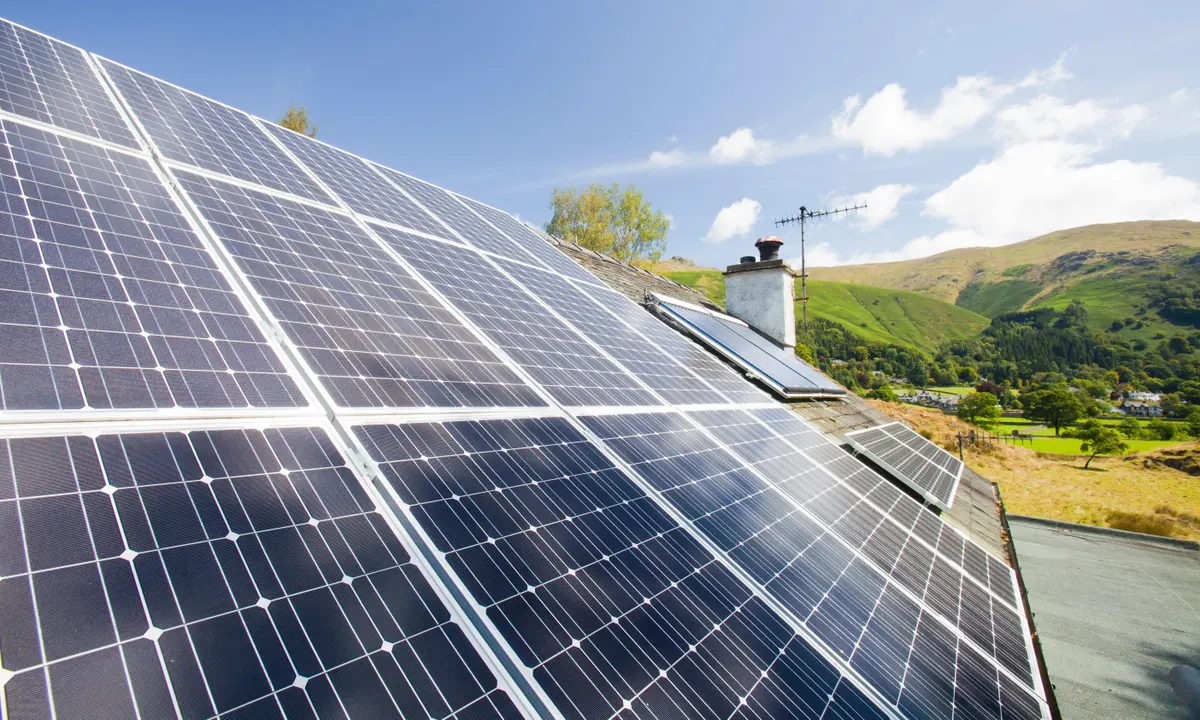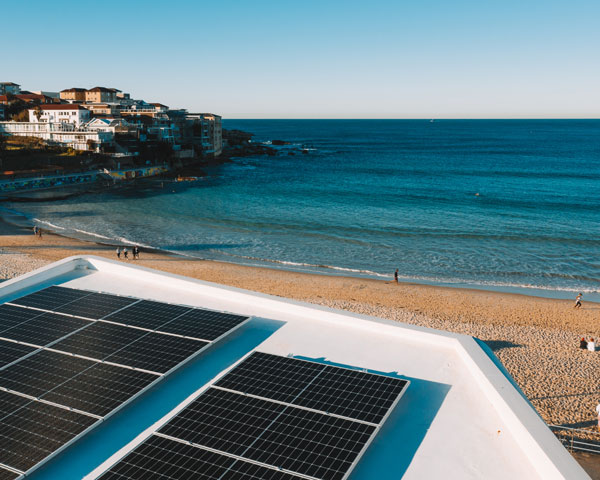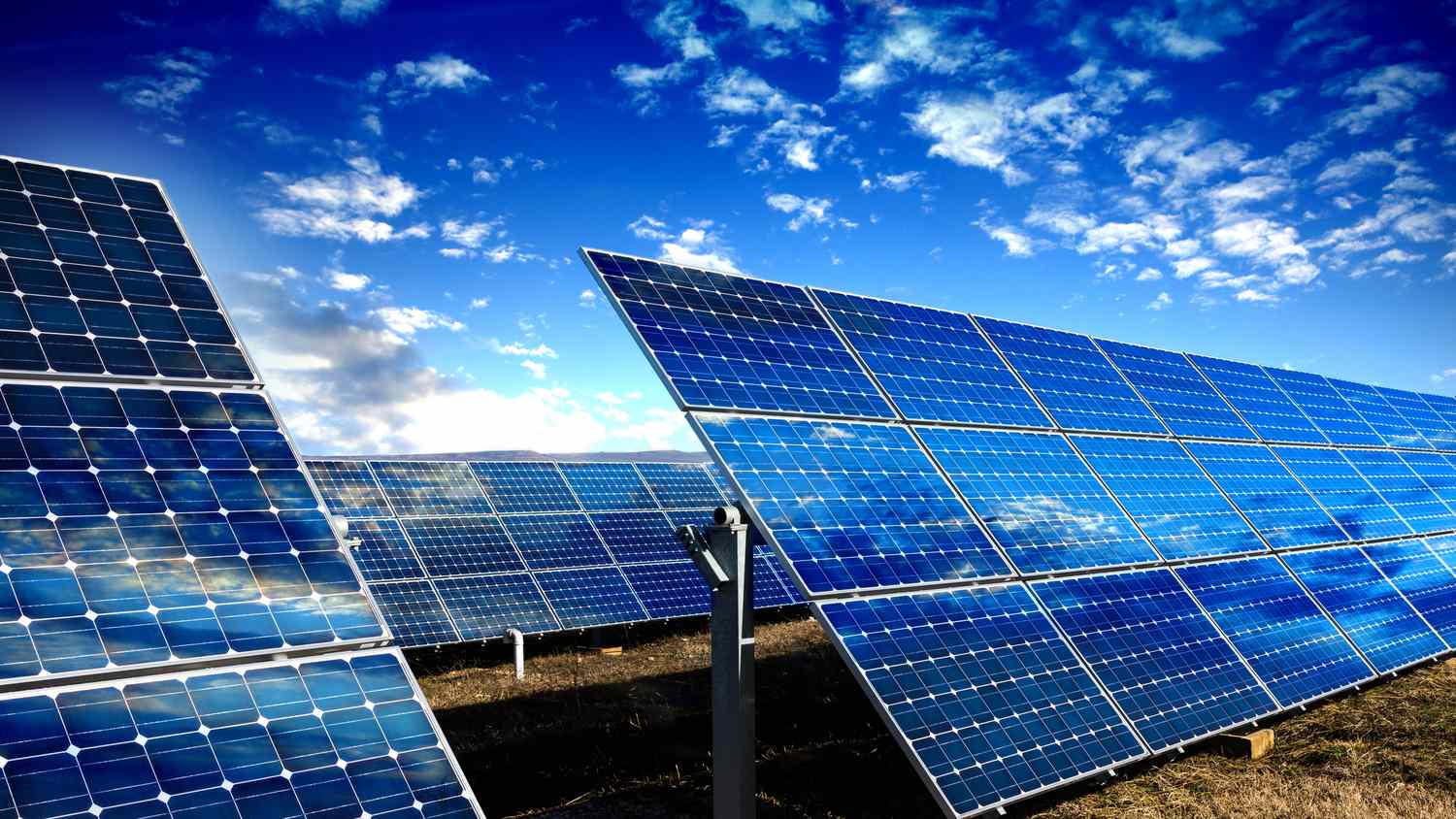Solar for Corporate Offices
A Business Look At The Transition To Solar
For corporate offices looking to slash operational expenses and their carbon footprints, solar energy offers a compelling alternative. Apple and Google have demonstrated strong demand for renewables, significant investment into their own solar installations, and a solid business case for renewables. At Apple, the headquarters in Cupertino runs on 100% renewable energy, primarily solar, and has reduced energy costs significantly.
How Long It Will Take You to Install and an Initial Investment
They know that deploying solar panels is a five part process: Site Assessment, System Design, Procurement of panels, Installation. XD9 The UPV is paid off in a federal / state incentive setting, for less than half of the same incentives as XD9, the electric vehicle cost. The Authentic Sealing Services even paid for itself in as little as 6 years — a New Jersey firm reported significant reductions in energy bills due to their implementation Case study.
The long-term financial and environmental benefits
Corporate offices can enjoy long-term benefits of solar energy in the form of reduced electricity bills and maintain a reduction in greenhouse gas emissions. According to the Environmental Protection Agency (EPA), some companies could reduce their carbon emissions by upto 90% through the use of solar energy thus meeting global sustainability targets.
Problems Facing Solar Implementation Solution
Though we continue to see the many benefits, it's not free from challenges including high initial costs associated with setting up a solar power system, land availability, and the many regulations surrounding solar installation in certain areas. However, companies still have options to tackle these beyond traditional solutions like solar leasing, Power Purchase Agreements (PPAs), and integrating solar with existing building management systems for maximised performance.
Case Studies
There have been few solar implementation on various sites by other companies and invaluable insights, benchmarked. In one case, a major retailer put solar panels on the roofs of 250 of its stores, providing up to 35 percent of the electricity needed at those locations. It is a measure not only leading to reduction in energy costs but has also solidified our position as a pioneer when it comes to sustainability.
Here are some of the future trends in corporate solar usage
Rising levels of photovoltaic efficiency, stronger infrastructural support from the government, and brighter green credentials across the private sector have worked together to promote the future of solar energy in the corporate world. To create more energy security and independence, there is a trend towards the integration of solar into smart grids with battery storage.

Solar in Manufacturing Processes
Level Up Production Energy Costs
A more frequent application of solar energy in such areas dramatically cuts the energy costs, one of the primary costs in operations, in manufacturing processes. A textile manufacturer in North Carolina installed sola panels on a roof of its facility encompassing more than 100,000 square feet, leading o a decrease in energy costs of 40%. This amounts to hundreds of thousands of dollars saved per year — and directly hits the bottom line.
Optimizing Sustainable Manufacturing Practices
The use of Solar energy is instrumental in augmenting sustainability in the manufacturing industry. Corporate partners reduce CO2 emissions this way and meet both legal provisions and consumer requirements for environmentally friendly products. One of the shining examples is a European automaker which now powers its plant entirely by solar power, ensuring its vehicles have a smaller carbon footprint.
Solar Manufacturing Technologies and Innovations
The latest enhancements are found in solar technologies like photovoltaic (PV) thin films and concentrated solar power (CSP) — modernizing an irreplaceable renewable energy source, and transforming the way it can be used in manufacturing. These technologies, as a result of which energy yield is not only increased, but the necessary installation area is also reduced, play a very critical role especially in the construction sectors of industrial zones, which are built together.
Challenges In Operations and Strategic Solutions
Integrating solar in manufacturing may struggle as it requires higher Capex and challenges in grid integration due to its existing high powered systems. Tactical remedies involve the mobilization of government incentives and the use of hybrid systems that mix solar energy with other kinds of renewable energy or logic power resources in order to offer consistency and efficiency.
Applications and Use in Real-World Scenario
Solar energy is taking the global manufacturing companies by storm. In California, a semiconductor factory utilizes solar energy to power much of its energy-hungry production. By reducing both the amount of overhead costs and thermal footprint of manufacturing, this initiative is helping to create an environment for manufacturing of sensitive products, like semiconductors.
Solar for Retail Spaces
Retail Operations and the Cheap Typing Pool
In retail, where long operating hours lead to high energy consumption—mostly with lighting and the HVAC system—solar power can help slash huge demand charges. Take the case of a big retail chain that deployed solar panels in some 200 of its stores and slashed their electric bills by as much as half. This decrease is huge, and it saves money that can help the business's financial health.
Sustainability marketing and Brand Loyalty
Retailers using solar power may advertise this to boost their credibility as sustainable brand, as well. In turn, this will attract eco-conscious consumers AND incentivize and retain them. One example is a Swedish fashion retailer that obtains all of its power from the solar panels on the roofs of its stores and openly markets this in hopes of putting their store on the map for eco shoppers.
Solar Innovations for Retail
Solar glass windows (solar PV windows) and solar parking canopies frequently offer innovative solutions for retail spaces. These power providing technologies also beautify your retail environment. For example, a shopping centre in California employs transparent solar panels on its façade that functions as both a power generator and a distinctive design feature.
Dealing with Installation and Maintenance Problems
Although there are definitely benefits, there are some challenges associated with Solar like restricted roof space and a problem of maintenance. Retailers can overcome these issues by selecting third-party-owned solar systems that offer all the benefits of having solar power without having to maintain the system or pay for the installation cost upfront.
Solar-Powered RetailSPR
Dozens of retailers have found it beneficial to go solar. An Arizona grocery store chain got solar panels on some stores, and more energy was pulled from the grid enlightened up 30% or they became known in the community as they is the man. These are type of examples that other retailers that are thinking about solar solutions can use for references and case studies.
Solar-Powered Advertising
Solar Power Pioneers in Outdoor Advertisements
Solar Billboard: Solar-powered advertising that uses photovoltaic technology to power digital outdoor advertising such as digital billboards and digital signage without the need for traditional power. Which not only reduce the operational cost but also enhances the advertisement visibility in marginalized zones. Over 5000 solar powered billboards have been deployed by one of the largest advertising companies in the United States which is now operating at a 60% lower energy capacity underlining a large change in energy practice.
Specification and Feature Of Solar Advertising Systems
Some solar-powered advertising systems, consist of solar panels, battery storage, as well as low power consuming LED displays. The process commences with the site assessment to decide the size and location of the solar panels which are necessary to capture the sunlight. These systems have been rolled out by an advertising firm in Germany over urban areas following which there was an increase of 40% in energy efficiency over conventional methods.
Cost Analysis & ROI
Solar Internet packages for is an upfront cost of hardware and labour time Nevertheless, the savings in the long term on electricity bills and maintenance costs pay for the cost of the units on the front end. A full cost-benefit analysis would see the point of break-even typically occurring within a 3-5 year time-period for these systems, This would be dependent on the size and location.
Adaptive challenges
One of the key challenges for implementing solar-powered advertising is the inconsistency of solar energy which can result in irregular ad displays. Adaptive Alternatives: This may involve essentially hybrid schemes mixing with the example of sunshine based framework with little wind turbines, or on the other hand grid associations for continuous running. Battery storage technology is another factor in making solar power a sound investment for your Bay Area home or business today with the increased reliability demonstrated by these new technologies to provide more dependable performance even during low sunlight times.
Solar-Powered Advertising Success Stories
Naturally, this has led many to solar-powered advertising as both a cheap and eco- friendly way to advertise. A good example of this is a retail brand that utilized solar-powered kiosks at outdoor events, not only powering the displays, but also providing mobile charging stations for attendees, further elevating the brand connection and audience experience.

Solar in Logistics and Warehousing
How to Make Solar Energy Work for Your Logistics Operation
For companies wishing to minimize operational costs and carbon emissions, integrating solar energy in logistics centers and warehouses is increasingly emerging as a strategic choice. In Texas, a huge distribution center installed 250,000 square feet of solar panels on its roof. This plant power up to 70% of its needs which contributes to an amazing decrease in electricity bill and helps to make the factory more sustainable.
How to Install and Efficiency Concerns
An angle between 20° and 40° from the horizontal produces optimal results in energy production when capturing sunlight for a way how to install solar panels in logistics and warehousing correspondingly. While solar tracking systems can be used by companies to maximize the amount of the sun's light that will hit their panels that day. Another well-known California project features automated trackers that follow the sun, such that it gathers up to 30% more energy than stationary installations.
Incentives and Economic Impact
Solar energy in logistics is a powerful example of a solar technology whose financial rewards can benefit even a company's balance sheet. In addition to lowering costs, businesses can take advantage of government grants and tax rebates. This was the case in Georgia, where a logistics company cut its electricity costs in half per year when it switched to solar, with the help of state incentives that paid for 20% of the project.
Challenges and Creative Solutions
Security deficiencies such as heavy mannerisms are more common, as are large initial investments and massive space requirements for servers. Solar leases and power-purchase-agreements (PPAs) these revolutionary financing models allows logistics firms to install solar systems with minimal out-of-pocket expenses. Coupling solar with energy management systems will allow to use energy to more smoothly and will reduce stoppages.
Solar-Powered Warehouse Case Studies
Several logistic firms have adopted solar solutions successfully. In one case, the solar-plus-storage system installed in one of the main e-commerce giant's fulfillment centers, it not only can power daily operating, but also act as backup to protect against power outages, providing uninterrupted operation. A unique feat in the logistics industry, they demonstrate resilience and sustainability.
Corporate Solar Investment Programs
Policy, Strategy + Analysis
The program of investment by a corporation in a solar falls short for many reasons, and the whole of a sophisticated planning and investment return analysis. Organisations have to judge in terms of the energy requirement, possible saving and environment conditions. Take, the large international energy firm that did the work of analyzing the feasibility of deploying solar at its locations around the world and estimated that the deployment would yield a 30% decrease in annual energy costs and that carbon emissions would drop 25%.
Funding Mechanisms and ROI
To ease investment in solar a combination of financing models exist – direct purchase, leasing and power purchase agreements (PPAs) are among the most common. They deliver Capex and Opex flexibly. One of the big tech firms has solar power on its headquarters; it used a PPA to pay almost nothing up front for the installation while getting the energy for a locked in rate for 20 years.
Large Scale Solar Projects
It is not an easy task to undertake large-scale solar projects as it involves a lot of planning, working with solar providers and meeting local regulation sorts. One example is an automobile manufacturer who has planted a 10-megawatt solar farm on deserted land next to its factory. Not just fulfilling the local grid during off-peak times, this project also delivers an impressive part of the plant's energy requirements.
Tracking, Report and Optimize
After installation, it is counted upon to monitor and report performance of solar investments. Energy production, savings, and maintenance needs are tracked with advanced software tools. A retail chain with over 300 stores utilizes real-time monitoring to increase the output of solar panels on their facilities (and immediately spot any problems)
Case Studies: Corporate Solar Success Stories
There have been a number of companies showing the potential for causing a wave with their solar investment programs. For example, a financial services company replaced 45% of its global operations with solar energy, saving the company over $5 million annually in energy costs and serving to burnish its image as a thought leader in sustainability efforts.





